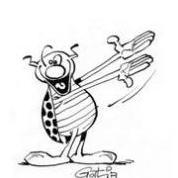Leaderboard
Popular Content
Showing content with the highest reputation on 09/05/2020 in all areas
-
Hello everyone! This is an allemande in C major for solo cello that I just finished. It is my second suite dance piece for the cello (the last one was a minuet). It is in [:A:][:B:] binary form and 4/4 common time. The first part is 14 measures long and modulates from the tonic, Cmaj to the dominant, Gmaj . Part B is 22 measures long and goes through more modulations: Cmaj -> Am -> Em -> Am -> Cmaj. Any feedback or suggestion is appreciated! Hope you enjoy it and thank you for listening!2 points
-
Hi! Minuets are trendy here it seems, and I've been recommended to try my hand at some. So here is a first minuet and trio for piano and flute. I feel it would be hard to dance on it, I realized I'm not very comfortable with a ternary rythm (and I forgot halfway that it was supposed to be a dance at all). The overall structure is: minuet1 - trio - minuet 1', where: minuet 1 is written in 2 parts for piano. It is made of 2 repeating sections [A] and [B-A']. A finishes on a half-cadence, B modulates and brings contrast, A' is same as A but ending on a perfect cadence the trio is in the key of dominant and the flute comes in. Its structure consists of 2 repeating parts [A] and [ B] (yeah, ok, I'll admit that I forgot A' and I was too lazy to change haha. But I think it's not too bad to have a bit less repetition) minuet 1' is the same as minuet 1 but without the repeats (thank god) Let me know if you have any comment/recommandation/suggestion/corrections 🙂 menuet #1 v2.mp31 point
-
1 point
-
This is another dance I found in my old archives (composed in the sequencer a long time ago). It's a Gigue which is the last dance in a traditional Baroque Dance Suite. It's usually in a fast 6/8 meter so I tried to emulate that feel. I imported the midi into MuseScore and edited the slurs and accidentals (for correct enharmonics in chromatic sections). The overall form is ternary as there's a Musette (meant to imitate bagpipe drones) couched in the middle in between the Gigue sections. This dance uses what I have heard termed "shifted tonality" - where distant key centers are juxtaposed chromatically next to each other. Note: the contrabass is there because the whole dance suite is written for a string orchestra, even though it doesn't come in until the end of the musette. I would love to hear your comments, suggestions or observations!1 point
-
1 point
-
Im glad you decided to share your minuet. The theme is catchy and stately. I can imagine a ball in the eighteenth century with dancers politely bowing. The form isn't a strict minuet but I think it works. Its a great piece.1 point
-
Thank you so much Guillem82! 🙂 Congratulations to you again for that nice first symphony you posted this week!1 point
-
Bravo, very catchy motifs and also very Bachy. Congratulations!1 point
-
Make sure to share it if you happen to find it, I am sure it must be really good! 🙂 Thank you so much for the video about the baroque suites! It is really useful as a summary of the common dances that appear in a baroque style suite. Also, I had not though about composing a suite in a more symphonic way, with each piece considered as a movement with different keys. I should consider that too! So far I have mostly studied only the Bach Cello Suites so I have to admit I am not really well-versed in modern ways of composing suites. I will need to check some modern composers suites out! Regarding the research of the suite and its form, I am studying the Cello Suites of Bach with the aid of a book called "Bach's Cello Suites: Analyses and Explorations" by Allen Winold. It is a book I recently discovered but I am really enjoying it and I think it goes quite deep into the different characteristics of the dances. As you say, most dances are defined by the time signature, the binary form and sometimes the tempo, but beside those general traits there seem to be a lot of room for variations. In the book some other features, quite insignificant most of the times, are defined (the author only take into account Bach cello, french and english suites and partitas for defining these features). For example, in Allemandes Bach tends to start with anacrusis and also to end each part with a post-cadential one measure melodic line. I tried to keep those two features for the sake of it, since they are not really form defining. In the end, as you said, there is a lot of freedom when composing these dances, which is something I love! Thank you so much for all your advices PaperComposer!1 point
-
Sure! Funny story...so most of the rehearsal marks were my section markers as I was writing this. I probably should have left it as original, but in the end I figured my submission would need to captivate the listener to compete, strictly with how they perceive it. Next time I'll try to make the score more clear 😄 The first A was the main theme, but I really looked at this as the introduction. The theme is spread out, varied rhythms in the strings and piano playing the chord progression. Oh...I guess I should talk about that. I didn't think about I IV V or anything like that (mostly) as I wrote this. I wanted this sinking feeling when you hear the chords. I'm not a big jazz guy, but one thing I've learned from jazz is their movements of chords are more chromatic mediant based, more common tones shared between the movements. Yeah they always use ii V I and every variant of that, but a lot of the in between stuff is what I'm looking at. This was an A dorian piece a lot of the time, but liberal usage of the F nat. note and bVI chord. The progression over the main theme is: Am7 | F7 | D9 | D9 | B7 | Ab7 or F7 | D7 There's of course a lot of variations on those chords throughout the piece, mostly the extensions, but in general the root movement is what I was attracted to. I hoped that parallel harmonies wouldn't be frowned upon too much in the judging, but I absolute love the root 5th 3rd stacked shape, and when moving the root by a third I was getting that sinking feeling I wanted while keeping the chords in line with an A based tonality. Anyway...the next section is a statement of all the themes. A in it's bare bones form at m. 35 (mark B), the B theme at m. 45, the C theme at m. 57 (I'm sure you see the trend here with the rehearsal marks lol), and the D theme at m. 63. A quick run down of the other themes: The B theme is mostly a harmonic progression underneath an A note. I wanted to get away from a dominant melody and instead really drive that sinking feeling with the chords. It's kind of tinkered with as you probably know from listening, but I thought of the chords under A as: F#m | F | C | B7 | Eb | D7 | I was hoping the C theme was a breath of fresh air, with an easily digestible romantic type melody, but at the same time fleeting and never really developed, just a periodic sentiment to add to the hopefully collage effect of the intertwined themes. The D section is a closing theme, just meant to transition to the fast sections throughout, but also to end it. It's a simple climb of an A dorian mode, with chords moving underneath down by thirds, finally followed by some manipulating of the main theme. Next is the A A A B C A part, all of this I thought of together. My whole goal was to keep hammering the A tonality, only once did I change the key in this piece, and it's brief. I used a theme and variations mentality here, trying to keep the rigorous tempo up while maintaining interest musically. The first two A sections are mostly the same, just changing who plays what and orchestration wise they segway a bit differently. The third A was an introduction of the syncopated rhythm in the bass register. As the piece goes on, I tried to make beat 1 hard to grasp with the basses giving such a hard downbeat. The B and C section remained the same with the added peppering of different motives. The last A was a transition to the E theme. I thought of E as the static piano harmony at m. 170 (L). I wanted something brand new, and I was messing around with this weird chromatic triplet idea that wound up being in this piece. I used the A theme for a melody, and at m. 194 I combined the C theme melody with the B harmony idea. Back to the introduction type restatement at m. 217 (M), using the A theme, starting to sprinkle in B section chords at m. 222, and a C theme at m. 233 (N). Rehearsal O is a final melodic statement of A before coming to the final D section at m. 253 (P) I agree with this, thanks for pointing that out. It sounds a bit bare after you pointed that out, I love the idea of keeping the triplet motion until the stop! I got some incredible feedback from this site when I first started posting my own music. I feel like I can't really share a lot of what I want to explore with composition in my life, and I even work with a bunch of musicians. I've learned a lot of living and working this life of a musician, and one of the most important things I've discovered is that a few encouraging words to someone you don't know and might not ever meet go a long way in helping keep the fire alive in all of us composers. Thanks for taking the time to share some words, it really means a lot. P.S. I also explored with a sub V chord quite a bit, it was a cool change to make Bbmaj7 resolve to Am without sounding so....parallel 😄1 point
-
No it's not in this forum. I wrote it years ago before I joined YC. I might have it saved on an old rewritable CD - I'll try to find it. I guess it depends on whether you intend to have the dances and the dance suite as a whole be more true to their Baroque roots or if you want to modernize them. My only advice for writing a dance suite is to treat it like a symphony where each dance is like a movement with it's own unique character and key (in the Baroque era they were all the same key but when I wrote my dance suite I changed keys and also alternated between major and minor). Usually there's some kind of macro-tonal plan for the keys - or you could simply gravitate towards closely related keys. Also, check out this video: The Baroque Dance Suite - it also gives some more modern examples of the dances mentioned. The Bourree in E minor mentioned in the video is also a piece I recently learned on guitar during the corona-virus quarantine. There are other dances that could be fit in between the Sarabande and Gigue such as the Polish Polonaise. The Italian Tarantella is a dance that is in many ways similar to the English Gigue as well. I hope you have fun! I'm sure I will enjoy listening.1 point
-
This is really cool! I really like the different harmonic textures you used and you write really well for the instruments. I admire your ability to achieve a wide variety of textures with the limited resources available to you with the chamber ensemble, for example the shimmering texture in the beginning and the staccato sixteenth note textures at around Rehearsal I. I think my favorite moments are the attention-grabbing opening that outlines a rich harmonic texture to overlay the main theme, m.53 that introduces a warm Eb major texture (goosebumps every time I hear it!), and the section at Rehearsal L with the triplets in the piano, which had a very hypnotic feel to me. Would you mind elaborating a little bit on your form? You do an excellent job interweaving the motives throughout the piece, but I'm having trouble figuring out the outline you gave. Maybe point to where the A, B, C themes etc. are specifically in the music? I don't think it's your explanation, I think it's just me and my brain doesn't want to work on a Friday afternoon lol. A small question on your notation: I wonder if you intend the tremolo-like opening measures in the violins to be slurred? Or do you actually want them to bow each note? The only part of the piece that stuck out to me as a little odd is the whole note at m.33. Maybe it's that the samples are not able to communicate your intention, but it seems out of place compared to the section that precedes it. If you're going for a crescendo up to a sudden fortissimo at m.34, I wonder if the effect would be better if you just continued the triplet texture with a crescendo? This might flow a little better, at least in my mind. Just a suggestion of course, feel free to ignore if it's not what you want. Overall I really enjoyed listening to this! You give a lot of great feedback around here, so it's great to hear some of your own work so we can return the favor. Congrats on your placement in the competition and I look forward to hearing more!1 point
-
"come with me and you'll be in a world of pure imagination, with the oompa loompas making candy There's a river, full of chocolate, I sure hope nobody falls in it these pipes are not big enough for a kid Oompa loompa doo-pa doopity, there's a chocolate river, don't eat anything before asking, every place but here Come with me and you'll be, in a world of pure imagination, and you'll see the factory I own"1 point
-
It is a nice Allemande! Will you write a Courante for it? I once wrote a whole dance suite for string orchestra although it might be lost now. I'll have to look for it.1 point
-
I enjoyed it very much. It sounds "sincere". Beautiful.1 point
-
gorgeous writing, is this part of a suite? from a notation standpoint are you aware you can add odd bars into you're piece so like at the very beginning the notation sent so odd? just something to consider, I look forward to hearing more form you!1 point
-
Im speechless! What an absolute joy! You know music is good when your feet tap and in you're imagination you become a conductor. Where did this come from? Did you discover a lost Haydn manuscript in someone's basement? Haha. Its a remarkable achievement to compose a symphony and this is wonderful!1 point
-
Hello there! During this COVID-19 pandemic, I decided to revise and continue one of my old compositions, a cello sonata, which I started around 2018 but have not managed to finish it. I decided to dig it out and start working on it again, and here it is. The sonata is in four movements, depicting the various musical periods of Baroque, Classical, Romantic and 20th Century. Movements: I. Allemande/Fugue: This movement was meant to be a separate project on a baroque suite for cello and piano, but I decided to make it part of this sonata.The movement initially only had the Allemande part, then I decided to add in the fugue in the middle to make the movement more interesting with a contrasting middle section. II. Allegro con brio: This sonata was in fact one of my early attempts in creating a piece in sonata form. I was quite inspired by Beethoven's sonatas at the time (both cello and piano), especially in the development section. To be honest, this movement is not really classical; it has some romantic references, especially the use of hemiola in the second subject inspired by a Brahms piece. I quite like how I have revised this piece, though I feel further improvements could be made. III. Variations on a nocturne: The tune is very familiar, and I think you will guess it soon enough. The first two variations are inspired by Czerny etudes (again, another Romantic composer), while the third is a dance modeled on some sight-reading piece. The fourth is inspired by a Brahms cello sonata movement, then the fifth kind of follows the style of a movement from Tchaikovsky's cello concerto. IV. Allegro marcato: The start is inspired by a Prokofiev sonata movement, in addition to one of Charles Ives' Violin Sonata which has an ostinato at the start. The piece functions as a recapitalization of the sonata, recalling motifs and ideas from the previous three movements. The start uses the fugue subject, for example. I hope you will all enjoy this piece. This piece is dedicated to a cello classmate in my music class. I have yet to show her this piece though haha. Any suggestions and feedback are welcome.1 point
-
Hello everyone! Here is a waltz for flute and piano that I recently composed. There are three main sections and the whole piece follows the form ABCB'A after a really brief introduction. B acts as a short bridge between the two main parts, A and C, which follow a more strict waltz rhythmic pattern. Roughtly, the tonality during the segments are: A: Dmaj | B: Dmaj to Amin | C : Amin to Amaj | B': Dmaj | A: Dmaj. It is my first piece in this style and I am not sure how to translate the four part writing theory I have been studying to a melody and piano accompaniment texture. I tried my best but there are probably many mistakes. Any advice or feedback is appreciated! Hope you enjoy it and thanks for listening!1 point


.thumb.png.8b5b433a341551e913a34392660bc95b.png)






